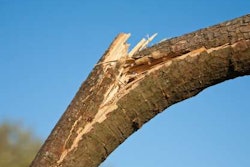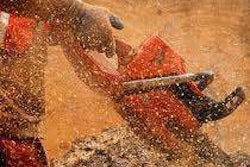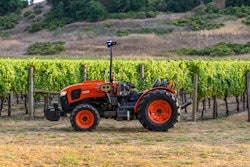Controlling erosion is one of a landscaper’s most important tasks. Whenever possible, ecologically friendly solutions are a landscaper’s first choice since they tend to add natural beauty and harmony to a site. Other areas may demand more human interaction, such as adding structure to bolster an area’s erosion defenses or using modern hydroseeding methods to quickly establish root systems.
When plants native to a specific site are reintroduced to control sediment byproduct, they will survive for an extensive period of time. Unlike foreign plantings, native plants can flourish under adverse conditions such as low soil fertility, exposure, drought or even insect infestation. Furthermore, native plant populations will increase naturally by seeding year after year, stabilizing the site’s condition and protecting it from further erosion.
The root systems of these native plants extend from one to 15 feet into the ground help “glue” soil in place. Above ground plant material controls water runoff from producing further destructive actions such as burrowing soil on slopes.
Stone and rip rap erosion control are static solutions because they do not continue to evolve and adapt over time. Though appropriate in some situations, stone and rip rap can break apart and flows down the hillside.
Hydroseed hard-to-reach areas
Many areas slated for erosion control are difficult to reach or work on due to the severity of the terrain. Time is also a factor in how quickly vegetation needs to thrive to prevent excessive sediment loss.
In these applications, many landscapers turn to hydroseeders, which can shoot a liquid seed mixture at high application rates as far as 550 feet. Hydroseeding shines most in applications that address severe slopes, hard to reach areas and landscapes with nooks and crannies.
Cotton gin byproduct
Wae Ellis, of Mulch & Seed Innovations, discovered a way to use waste materials left over from cotton manufacturing in his alternative “hydroseeding” method. Ellis replaced the polymers commonly used as tackifiers in many types of seeding liquids with Grade C cotton waste, which is made up of leaves, stems and other waste material left over from the cotton ginning process.
In the United States, more than 21/2 million tons of Grade C cotton byproduct are dumped each year on farmlands as fertilizer. Ellis realized this waste material could act much the way grass clippings do when left on a lawn after mowing to act as natural fertilizer The cotton plant fibers nurture the soil by enhancing the Ph levels and by providing nitrogen phosphorus and potassium nutrients. The cotton also helps to keep the soil moist so that the conditions are ideal for new growth germination.








